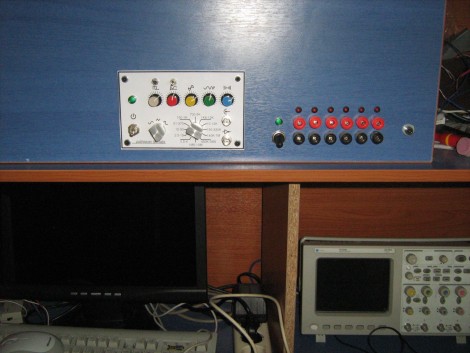
A function generator is a handy piece of test equipment to have on-site. [Kammenos] designed and built his own function generator, using the bench itself as the enclosure. You can see above that the control panel presents a clean finished look. To achieve it, [Kammenos] designed and printed the panel labels on a sheet of paper, and used a piece of acrylic to protect it. The circuit inside uses a MAX038 high-frequency generator chip. This is a full-featured part that allows for great control based on a few external components. One of those is a selectable frequency range based on the capacitance value on one pin. This is selectable using a twelve-step rotary switch with a dozen different cap values. There’s also adjustment knobs for fine tuning, duty cycle, and DC offset.
Check out the video after the break for a full demonstration. If you want to build this yourself you’ll need to do some chip hunting. The MAX038 is obsolete. You may still be able to find one, but at around $20 you should be able to source a replacement with the same features and save yourself cash all in one step.
Continue reading “Function Generator Built And Mounted Inside Electronics Bench”


















